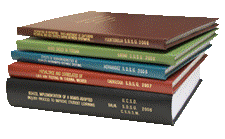Libraries, University of Nebraska-Lincoln

Archival Master’s Theses from the University of Nebraska-Lincoln
Date of this Version
12-2002
Document Type
Thesis
Citation
Thesis (M.S.)—University of Nebraska—Lincoln, 2002. Department of Mechanized Systems Management.
Abstract
Performance effects were measured on a combine unloading system using three different auger timing settings.Performance measures included maximum startup torque, mean operating torque, standard deviation of the operating torque, flow rate of grain through the system, and mechanical damage to the grain.The performance effects were measured with the system unloading corn and soybeans.
The data were statistically analyzed to check for interactions between the grains and differences between the timings.Using an alpha value of 0.1 it was found that timing 1 for both grains had a 3% (<2.4 L/s) higher flow rate over timings 2 and 3.Timings 1 and 2 for both grains had higher maximum startup torque, about 10% (60 N·m) more torque required than timing 3.In soybeans, timings 2 and 3 also had the smallest standard deviation in operating torque, about 30% (20 N·m) less than timing 1.We were unable to detect any differences in mechanical damage to corn or soybeans as a result of unloading auger timing.These findings suggest that timing 3, with the cross augers lagging 90° behind the vertical unloading auger, may require less maximum startup torque and less variation in torque for the cross augers to effectively fill the loosely filled space left after the vertical auger lifts the grain without extra torque effects of having the augers push against each other as they do in timing 1.
Advisor: Michael F. Kocher


Comments
Copyright 2002, the author. Used by permission.